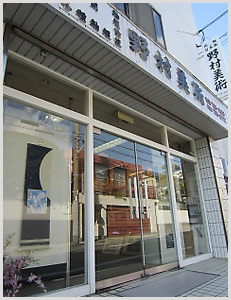Request for Scroll Mounting of Calligraphy Work from a Customer in America
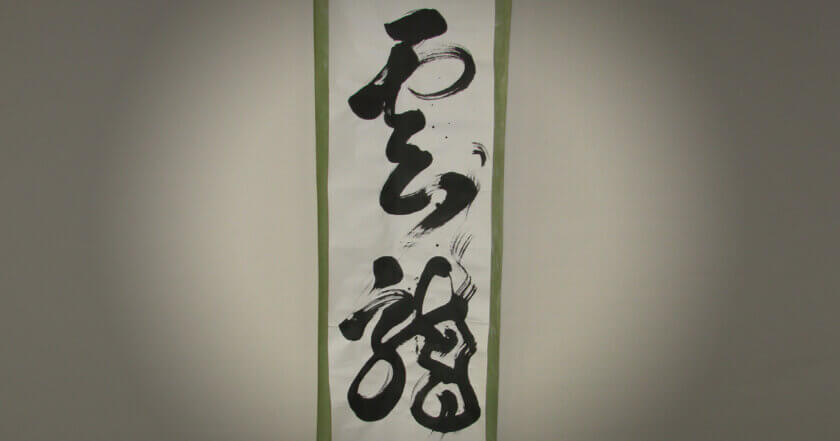
Contents
Inquiry
Our company receives inquiries about scroll mounting from all over the world.
This time, we received an inquiry from a customer in America regarding the mounting of a calligraphy work.
The piece in question is a dynamic work titled “Unryū” (Cloud Dragon).
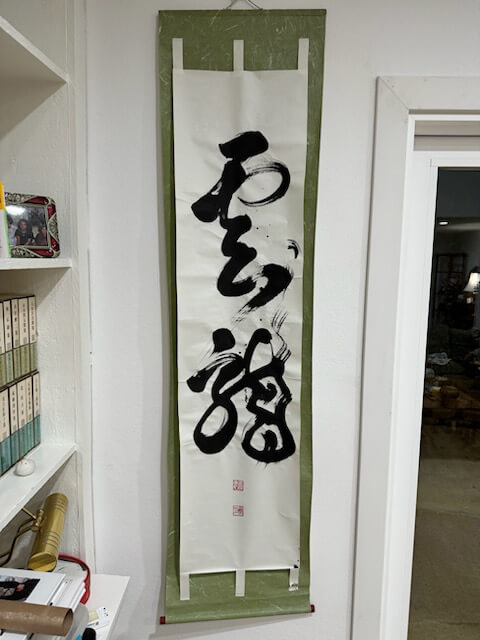
The customer requested that we cut off the ink splashes at the bottom of the piece if possible.
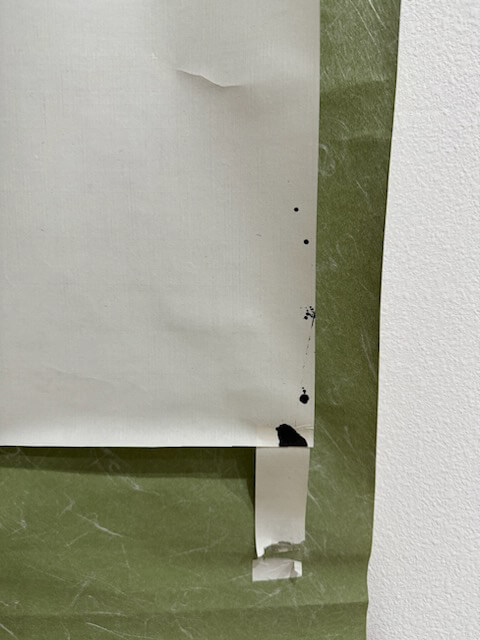
Rough Estimate for Restoration
Based on the information provided, we presented a rough minimum cost estimate for the restoration.
The customer was satisfied with the estimate and showed a positive reaction, expressing a desire to use higher-quality fabric to enhance the piece further.
We promptly arranged for the customer to send the work to us for a more detailed consultation.
Detailed Consultation
Upon the arrival of the piece, we examined it in person.
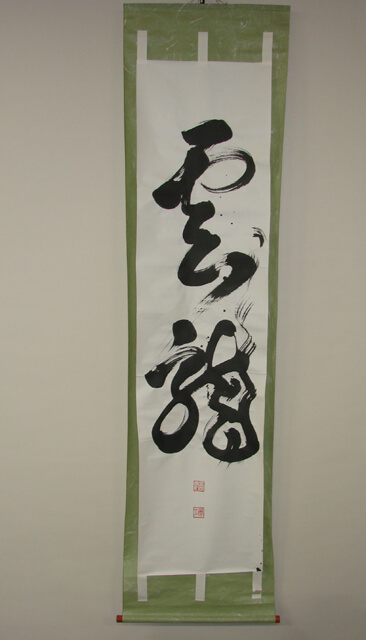
The paper quality was harder than expected, and there were already significant creases.
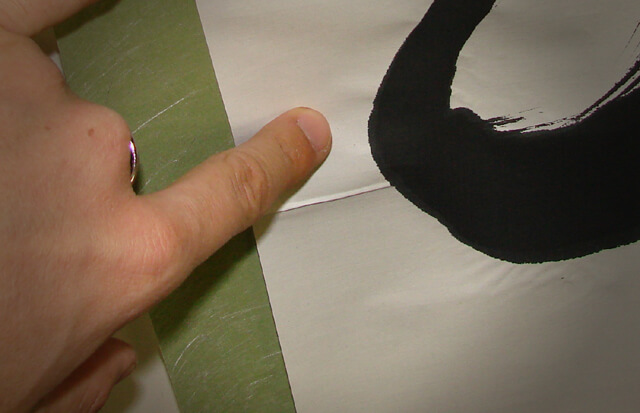
We explained to the customer that the creases were severe and might not completely disappear even after mounting, and they acknowledged this.
We presented various fabric options, and the customer selected a fabric with a dragon pattern, which he found very appealing.
The customer also inquired whether to include the “Ichimonji-otoshi” option. We explained that this option would enhance the artwork’s appeal, and the customer agreed to include it.
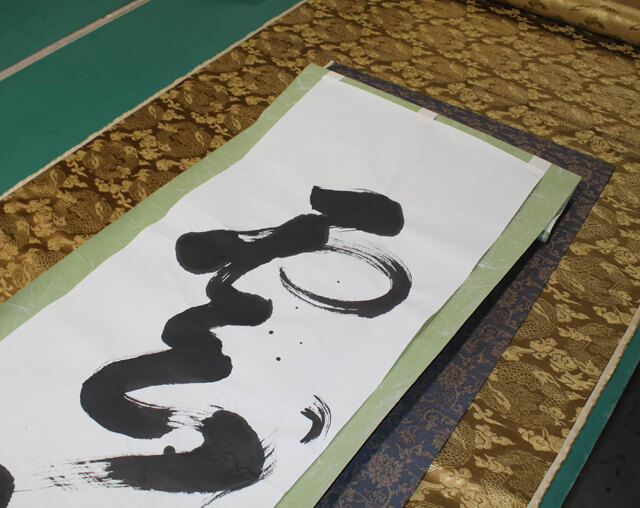
Completion and Customer’s Reaction
The mounting work was completed, and the scroll was finally finished. Here is the completed scroll.
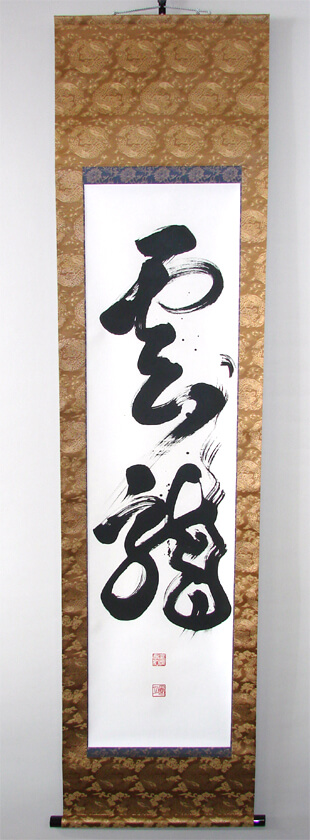
The “Ichimonji-otoshi” we proposed effectively enhances the artwork. The creases were also sufficiently stretched, so they do not interfere with the viewing experience.
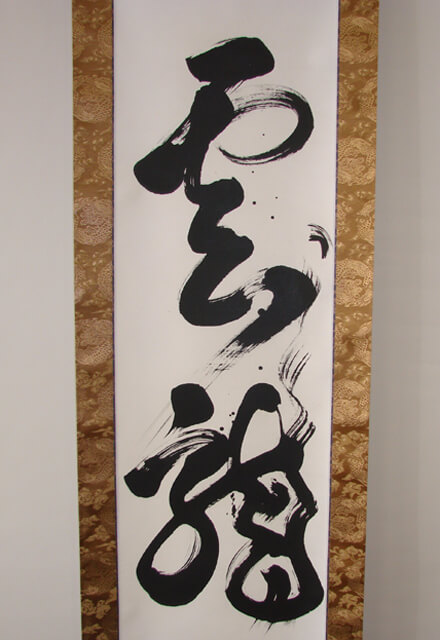
The dragon-patterned fabric looks impressive.
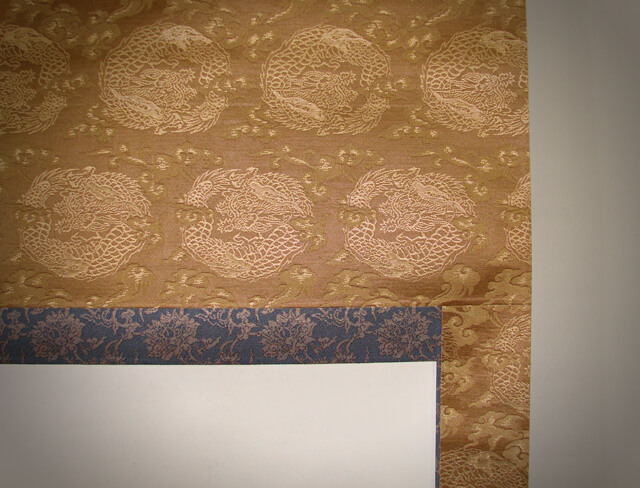
The customer was very pleased with the finished work.
Conclusion
Our company offers scroll mounting services for unmounted calligraphy works worldwide, just like in this project.
We strive to maximize the appeal of each piece. Please feel free to consult us for your needs.

